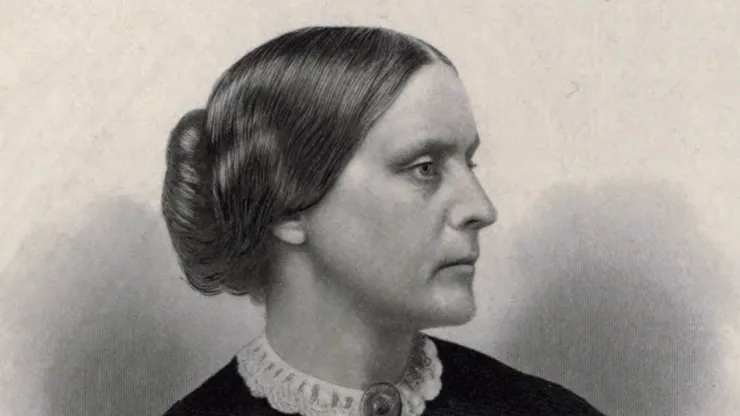Talking Big Ideas.
We humans developed complex societies because we developed complex narratives. We gathered around fires, told stories, and built frameworks for how to understand the world.
Narrative frameworks help us make sense of the world around us. From malevolent and benevolent gods controlling the weather to scientific laws explaining our physical world to us vs. them views in today’s politics.
Frameworks help us to organize our thoughts and effectively communicate with others.
When your goal is to unite people to your cause, using a framework to explain your ideas will help your listeners grok with you.
The following template is one approach you can use. It provides a persuasive framework that will help you explain your ideas in a way that will win others. You can use this template whether you have 30 seconds to talk or 30 minutes.
Start with an Audience-Focused Opening
Begin with an engaging opening that puts your audience at center-stage. Use this as an opportunity to establish common ground and frame what you’re about to tell your audience. Having a specific audience in mind will help tremendously.
Your opening might be a single sentence or it could be 5 minutes. Tailor your first moments (or minutes) with an audience. Make your opening about them, not yourself.
You can…
- Ask a question: “On a scale from 1-10 how comfortable are you with public speaking?”
- Make a bold claim: “You could 10x the power of your spoken words.”
- Pose a scenario for consideration: “Imagine you’re asked at the last minute to do a keynote speech in front of 1,000 people.”
The key is to make your audience, whether it’s one person or many, the center of your opening. Use pronouns like “you” and “your” rather than “I” or “my”.
Create a positive emotion for your audience. Make them feel important, validated, or motivated.
Don’t make poor assumptions or imply something negative. For example, don’t say: “You probably don’t spend enough time working on your public speaking.”
Tactic: Dropped Intro. Use the first moments of your presentation to capture your audience’s attention. Then come back to share your name and any other pertinent information about yourself.
Example: Have you ever ended a presentation or conversation feeling like you utterly failed to connect with your audience? I’m Maryrose Ewing, and I’m a public speaking coach.
Paint A Shared Vision
After you’ve captured your audience’s attention with your engaging opening, lay the foundation for your idea. Paint a picture of what there is to gain by joining your cause.
What’s the vision of a better world we could achieve if we implemented your solution (which you’ll get to in a moment)?
Why should the audience care about what you have to say?
What do we have to lose if we don’t follow you? What’s at stake here?
The stake is something we can all agree we want. It’s a better future for everyone. It’s what can happen if your listeners join forces with you.
You can follow up on the question or bold claim you made in your opening:
Whether you’re a 1 or a 10 in your public speaking comfort, you can increase the power of your words. You can be the kind of conversationalist that leaves others wanting more. You can be a speaker who takes any stage with confidence and excitement rather than dread and anxiety.
Or you could continue your scenario from the opening:
Imagine that any time you got on a stage, you were confident and compelling. You connected with your audience and won them over to your way of thinking. Imagine being excited for a last-minute keynote opportunity rather than anxious.
Your goal in this part is to hold your audience’s attention. Make them eager to learn how we get to this better world.
Tactic: Clarify your vision by asking yourself: how will the world be different when my idea is successful? In what vivid ways will life be better for my listeners?
This is the picture you want to paint. Make sure it’s something your audience will also find compelling. My dog, Ollie, finds a dead fish extremely compelling. I do not.
Clarify the Problem
You’ve captured your listeners’ attention and held it by telling them why they should care. Now shine the spotlight on what threatens that shared vision. The problem.
Why don’t we already have the better future you just painted? What’s holding us back? What is threatening the vision that we all agree on?
Your problem is the specific reason that something needs to change. Outline the consequences for your audience and make it clear why they need to act.
Most leaders and experts struggle to dedicate time to improving their speaking skills. It’s hard and scary to practice speaking, so they avoid it. Even experienced speakers might not know where to start or might not get honest feedback to help them improve.
Construct a problem that your audience agrees is a problem. It might not be obvious to your audience that the problem is actually a problem or that it’s important to fix it.
To know how much explanation your problem needs, consider whether it is chronic, acute, or latent.
A chronic problem is ongoing but not urgent, like maintaining a healthy lifestyle. You’ll want to clarify the importance of solving this problem now.
An acute problem is specific and obvious, like a bridge collapse. Your audience won’t need much education or convincing. They’ll want the solution.
A latent problem is something people might not be aware of. AI security and risk was a latent problem until ChatGPT burst into the limelight. Most people weren’t aware of the issue until something specific made it feel acute.
Leaders who simply avoid public speaking or “wing it” miss out on opportunities to build their brand and promote the important work they do. This is an insidious problem that may not be obvious but can change the trajectory of your career and your organization if not addressed.
Tactic: Use pauses around your problem to draw attention to it and ensure your listeners really understand what the problem is. Don’t gloss over it.
Present Your Solution
You now have your audience’s attention, care, and concern. Up until this point, your focus has been on laying common ground and inspiring your listeners. Now, it’s your opportunity to present what you want your listeners to do or agree with. This is the thing you’re trying to persuade others of.
What is it that you want your listeners to believe? How can we solve the problem you presented to protect or secure our shared vision?
Working with a speaking coach gives busy leaders and experts the structure, perspective, and feedback to make tremendous progress in building their speaking skills
Make your solution clear and tied to the problem. Avoid any disconnect between problem and solution that would pull your audience out of the framework you’ve laid out.
Tactic: state your solution in positive terms. Say what you do want to happen, not what you want to stop.
Telling your audience to “end the use of fossil fuels” doesn’t give them anything to do. It’s a non-starter. Telling them to “transition to a clean, abundant energy regime” gives them something to act on, even if it’s non-specific.
Call Your Audience to Action
End your argument with a clear call to action and specific next steps. What tangible action should your listeners take?
Weave themes from your opening back in. You can even write your opening and closing together after you’ve constructed the vision, problem, and solution.
Think of your closing as the start of an open road. This isn’t the end of the story. The hero is only starting out. The dragon is yet to be slayed.
Earlier I asked you to imagine taking the keynote stage at the last minute in front of an audience of 1,000 people. Now imagine that you stepped onto that stage with confidence and moved all 1,000 people to action. What are the steps you’re going to take to make this happen?
The closing frames the conversation that you want to have next. Make it clear to your audience what is needed to implement your solution and achieve the vision we all want.
Tactic: Outros. Bring your presentation full circle and tie your closing remarks back to your opening attention grabber. Try answering a question you set up in the beginning or finishing a story you started.

What’s an idea that you want to persuade someone of? Sketch out a persuasive argument following this structure.
Think of how you could start by connecting to a specific audience. What’s a vision that you all share? Articulate what threatens that vision followed by your solution. End with a clear call to action.
We all use frameworks to understand the world around this. Provide your audience with the framework that leads to your solution.




